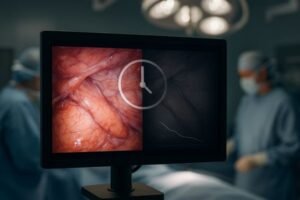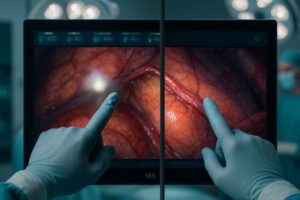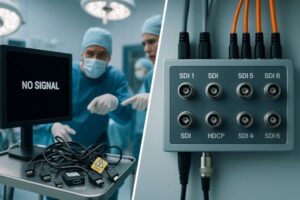Robotic surgery offers immense precision, but surgeons depend entirely on a flawless visual feed. Any delay or imperfection in the displayed image can compromise delicate procedures. This article explores how specialized monitors meet these advanced surgical demands.
Reshin monitors assist during robotic-assisted surgeries by providing ultra-high-definition, low-latency visual information. This enhances the surgeon’s ability to control robotic instruments with precision, improving procedural accuracy and patient safety in complex operations.
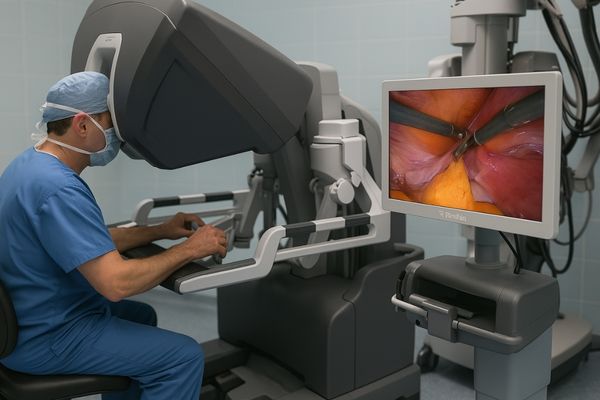
The evolution of surgery includes a significant shift towards robotic assistance. These systems allow for minimally invasive techniques with enhanced dexterity. However, the surgeon operates remotely from the patient, relying on a monitor to see the surgical field. The quality of this visual link is paramount. We will examine the unique visual demands of robotic surgery, how our monitors enhance clarity and responsiveness, their ergonomic benefits, and which models are optimized for these environments.
What visual demands are unique to robotic-assisted surgeries?
Robotic procedures require the surgeon to interpret a 3D environment on a 2D screen, controlling instruments with extreme precision. Flaws in the visual feed can have direct consequences. This makes specific display capabilities non-negotiable.
Robotic-assisted surgeries demand near-zero latency for real-time instrument feedback, exceptional image resolution to distinguish fine anatomical details, and low image noise to ensure an unobstructed view, all critical for precise remote manipulation.
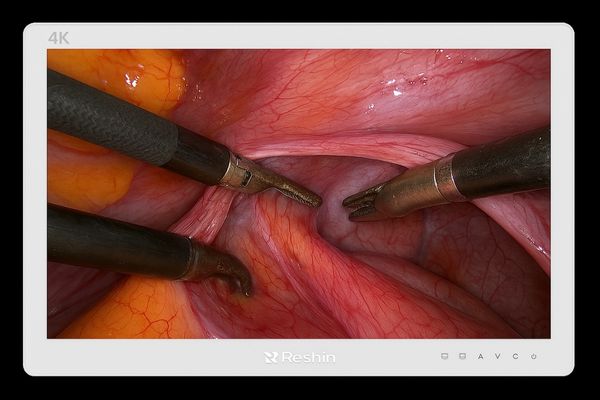
Robotic-assisted surgery creates a unique interface between the surgeon and the patient. The surgeon is typically seated at a console, viewing a magnified, often three-dimensional, image transmitted from cameras inside the patient. This setup imposes stringent visual demands. Firstly, image latency1, the delay between an action and its display, must be virtually imperceptible. Millisecond-level response times are crucial because the surgeon’s hand movements directly control robotic arms; any lag can disrupt hand-eye coordination and potentially compromise safety. Secondly, high resolution2 is essential. Surgeons need to discern minute anatomical structures, differentiate between tissue layers, and identify tiny blood vessels or nerves. This requires monitors capable of displaying images with exceptional detail and sharpness, often 4K or higher. Thirdly, the image must have very low noise3. Visual artifacts or graininess can obscure important details or cause eye fatigue during long procedures. The monitor must faithfully reproduce the image from the robotic system’s camera without introducing interference.
How does Reshin enhance image clarity for robotic control and precision?
Surgeons need to see every detail with absolute clarity to make confident decisions. If the image is not sharp or colors are inaccurate, surgical precision can suffer. We focus on delivering superior visual information.
Reshin monitors enhance image clarity through high brightness levels, excellent contrast ratios, and consistent color uniformity. This allows surgeons to clearly differentiate tissue layers, identify critical structures, and accurately assess incision depth, supporting precise surgical actions.
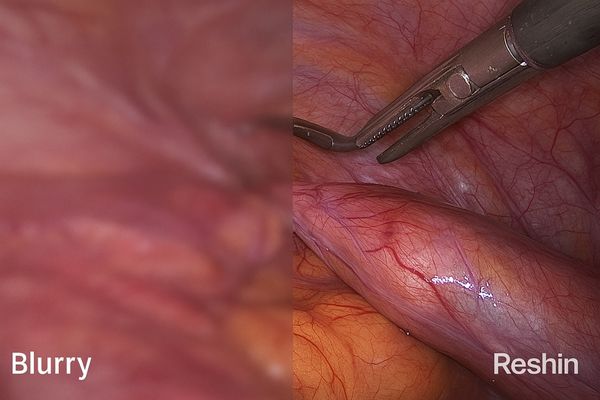
We understand that image clarity4 is fundamental to the success of robotic-assisted surgeries. Our surgical monitors are engineered to provide an exceptionally clear view of the operative field. This begins with high brightness capabilities. Operating rooms are often brightly lit, and our monitors ensure the surgical image remains vivid and easily discernible, preventing details from being washed out. Equally important is a high contrast ratio5. This allows for the distinct visualization of subtle differences in tissue textures and helps define the edges of structures, which is vital for precise dissection. Color accuracy and uniformity across the screen are also critical. True-to-life color reproduction helps surgeons correctly identify different types of tissue and assess blood flow. Our 4MP and 4K resolution monitors6, such as the MS321PB, deliver the pixel density needed to resolve fine details, allowing surgeons to see, for example, the delicate layers of tissue or the exact placement of a suture. This level of clarity supports better decision-making and enhances the surgeon’s ability to perform intricate tasks with confidence.
Which Reshin display features benefit real-time surgical responsiveness?
In robotic surgery, the monitor is an extension of the surgeon’s senses. Any disconnect between their actions and the visual feedback can be detrimental. We design features that ensure a seamless connection.
Features like multi-interface input options, advanced low-latency signal processing, and high refresh rates on Reshin monitors ensure seamless integration with robotic systems. This provides immediate visual feedback for real-time procedural control.
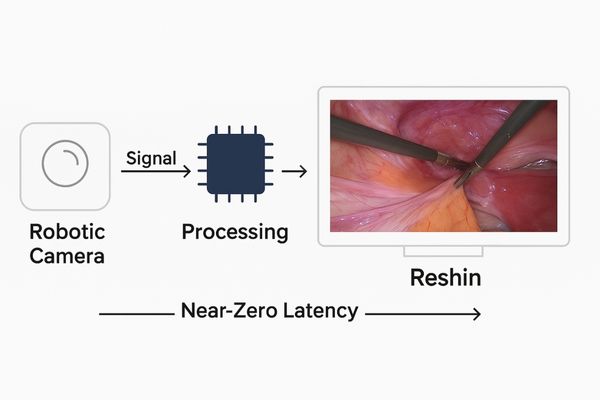
Real-time responsiveness is a cornerstone of safe and effective robotic surgery. Our monitors incorporate several features to achieve this. Firstly, versatile input interfaces, including multiple HDMI and DisplayPort connections, ensure compatibility with a wide range of robotic surgical systems, including leading platforms. This allows for straightforward integration into existing OR setups. Secondly, our displays employ advanced signal processing technology7 specifically designed to minimize latency. This means the time between the robotic camera capturing an image and that image appearing on the screen is reduced to an absolute minimum. This near-instantaneous visual feedback is crucial for maintaining the surgeon’s hand-eye coordination and intuitive control over the robotic instruments. Thirdly, high refresh rates8 contribute to smoother on-screen motion, reducing blur and making it easier to track fast-moving instruments or dynamic physiological processes. These features work in concert to ensure that what the surgeon sees on the monitor is a precise and immediate reflection of the actions being performed within the surgical field. This direct link is vital for complex maneuvers and contributes significantly to the safety and efficiency of the procedure.
How do ergonomic and multi-angle viewing designs help the surgical team?
Robotic surgeries can be lengthy, and the entire team needs a clear view. Poor ergonomics or limited viewing angles can lead to fatigue and hinder collaboration. Our designs prioritize comfort and accessibility.
Reshin monitors with adjustable rotation, height, and tilt, combined with wide viewing angles and anti-glare surfaces, provide clear, comfortable visualization for both the primary surgeon and assisting team members, fostering better coordination.
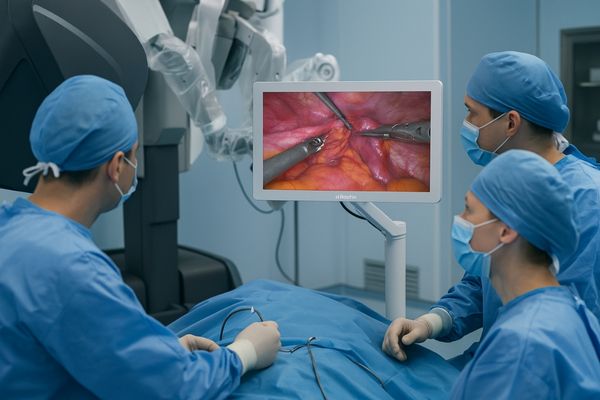
Ergonomics and shared visibility are key considerations in the design of our surgical monitors. The primary surgeon, often seated at a console for extended periods, benefits from a display that can be perfectly positioned. However, other members of the surgical team, including assistants, nurses, and anesthesiologists, also need to clearly see the surgical field. Our monitors typically feature stands or VESA mounting compatibility that allows for extensive adjustment, including rotation, height modification, and tilting. This enables each user or the entire team to achieve an optimal viewing position, reducing neck and eye strain.
Furthermore, our displays utilize screen technology that provides wide viewing angles9. This means that the image quality, including color accuracy and contrast, remains consistent even when the screen is viewed from off-center positions. This is particularly important in a collaborative environment where multiple people may be looking at the same display from different vantage points. Anti-glare surfaces are also standard, minimizing reflections from ambient OR lighting, which can otherwise obscure the image or cause visual discomfort. These ergonomic features and multi-angle viewing capabilities ensure that the entire surgical team can maintain a clear and comfortable view of the procedure, supporting better communication and synchronized teamwork.
| Ergonomic Feature | Benefit for Surgeon | Benefit for Assisting Team |
|---|---|---|
| Height Adjustment | Reduces neck and back strain, allows optimal posture | Enables clear view even when standing or at an angle |
| Tilt & Rotation | Customizes viewing angle, reduces glare | Adapts to various OR layouts and team positions |
| Wide Viewing Angles | Consistent image quality from console position | Clear, undistorted view from sides of the OR table |
| Anti-Glare Surface | Minimizes eye fatigue, clearer image under OR lights | Reduces distracting reflections for all viewers |
This table highlights how specific ergonomic features benefit the entire surgical team.
Which Reshin models are optimized for robotic surgery environments?
Different surgical procedures have specific visual requirements. For advanced robotic operations, certain monitor characteristics are essential. We offer models tailored to these demanding applications.
Our Reshin MS321PB (32-inch 4K) and MS430PC (43-inch 4K) surgical monitors are optimized for robotic surgery. They offer large, high-resolution displays, DICOM compliance for image review, antimicrobial coatings, and sealed panel designs ideal for sterile environments.
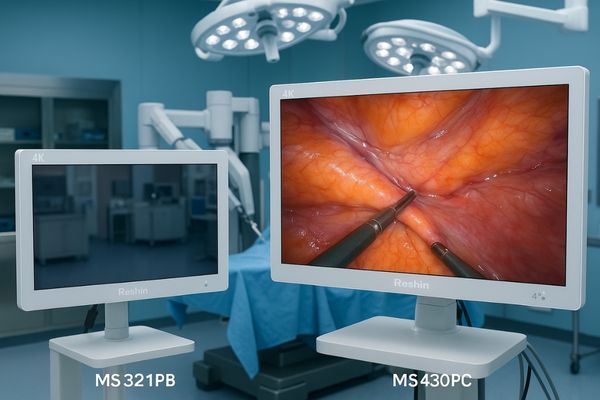
We have developed specific models like the MS321PB and MS430PC with the advanced needs of robotic-assisted surgery10 in mind. The MS321PB is a 32-inch 4K UHD monitor that provides an excellent balance of screen size and exceptional detail, allowing surgeons to clearly discern fine anatomical structures. The larger MS430PC, a 43-inch 4K UHD display, offers an even more immersive view, which can be beneficial for complex procedures or when a larger group needs to observe. Both models deliver the high brightness, contrast, and color accuracy necessary for critical surgical visualization.
Beyond the core visual performance, these monitors incorporate features important for the surgical environment. They support DICOM Part 14 compliance11, allowing for accurate review of pre-operative radiological images if needed on the same display. The housings often feature antimicrobial coatings12 to help inhibit microbial growth on surfaces, contributing to OR hygiene. Sealed front panels make them easy to clean and disinfect, which is vital in maintaining a sterile field. These characteristics, combined with their low latency and high reliability, make these models particularly well-suited for demanding applications in urology, gynecology, general surgery, and other specialties employing robotic assistance.
Conclusion
Reshin monitors provide the critical, high-clarity, low-latency visuals essential for robotic surgery. Our displays enhance surgeon control, team coordination, and overall procedural success in these advanced operations. To upgrade your robotic surgery setup with precision-engineered displays, contact Reshin at martin@reshinmonitors.com.
-
Understanding image latency is crucial for ensuring safety and precision in robotic-assisted surgeries. Explore this link to learn more. ↩
-
High resolution is vital for surgeons to see intricate details during procedures. Discover why this matters in surgical outcomes. ↩
-
Very low noise is essential for clear visuals in surgery. Learn how it impacts surgeon performance and patient safety. ↩
-
Understanding the significance of image clarity can enhance surgical outcomes and improve patient safety. Explore this link to learn more. ↩
-
Discover how high contrast ratios improve visualization in surgeries, leading to better precision and outcomes. This resource is invaluable for medical professionals. ↩
-
Learn how advanced resolution monitors can transform surgical practices by providing clearer images, aiding in better decision-making during operations. ↩
-
Exploring this technology will provide insights into how it improves surgical outcomes by reducing latency. ↩
-
Learning about high refresh rates can help you appreciate their role in improving visual clarity and tracking during surgery. ↩
-
Understanding the impact of wide viewing angles can help you appreciate their role in collaborative surgical environments. ↩
-
Robotic-assisted surgery offers numerous advantages, including precision and reduced recovery times. Learn more about its impact on healthcare. ↩
-
Understanding DICOM Part 14 compliance is crucial for ensuring accurate surgical imaging and patient safety. Explore this link for detailed insights. ↩
-
Antimicrobial coatings play a vital role in maintaining hygiene in surgical settings. Discover how they work and their benefits. ↩

